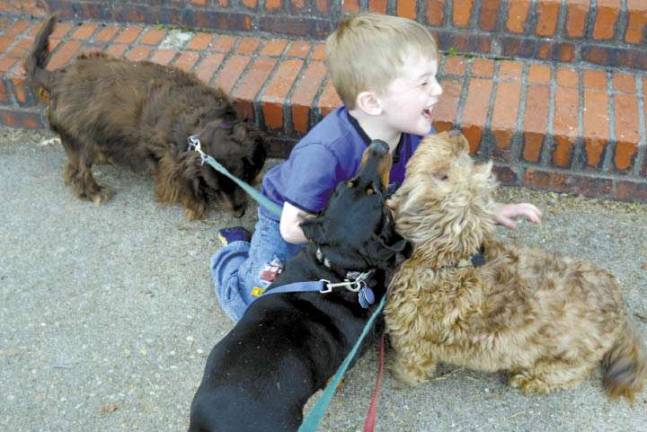Kids and Furry Friends

How to ensure a good relationship between children and pets
There's an ongoing debate about the pros and cons of having a pet in a family with children. Obviously children don't have the same level of reasoning and insight as adults, so it is normal for children (especially under 9 years of age) to have difficulty understanding the subtle body language of a dog or cat.
Many times there are instances when an animal is trying to "kindly" let a child know that what they are doing is scaring them, yet the child does not see this. For example, often when a dog freezes up when being petted or approached while eating, they are letting the person know that they should stop. Most adults can see this, but many children cannot. That said, it has been widely publicized in recent years that raising a child with pets can be great for learning and overall development for the child and for the dog or cat.
Fortunately in the modern sheltering world, most animal shelters have some kind of behavior evaluation that they conduct with every dog or cat who needs a new home. Although behavioral evaluations are not flawless, you can get a good idea about an animal's readiness to share a home with a child through understanding the history of the animal and the results of the behavior evaluation. Once the new pet is in the home there are a lot of great things that a parent can help a child can learn from their dog or cat. Some examples include how to be gentle when petting, when and where it is OK to pet a dog or cat, basic understanding of feeding and grooming needs, how to make a dog "sit" or "lie down" without having to use brute strength, taking their pet to the vet, as well as learning by watching how their parents handle the ups and downs of pet parenting. If done correctly, the social awareness a child can gain from being a part of their pet's life can be astounding.
One of the largest challenges that typically occurs in any dog/child relationship is how can they play with each other in a mutually beneficial way. It is very common during the spring and summer for vets to get phone calls from dog owners expressing concern that their children and dog are not "getting along." Often the weather is nice, they are outside playing, all is going well until the dog knocks over the child, child cries, dog gets scolded, and the fun is over. It is important to remember that the way a dog perceives fun is not always the same way we, as humans, parents and children perceive it. Games like fetch are a great way to teach dogs how to have fun in a way that is socially acceptable in our world. Even better, go out and get a kiddie pool and throw the ball in there to get the dog cool and increase the fun.
If you have a dog who doesn't like toys all that much but loves food there are ways that your pet and child can play games together. In the summer, you can have fun freezing chicken broth in ice cube containers for a cool treat. Then under your supervision, have your child make your dog sit down then have your child toss the frozen treat to your dog. If you get your child involved in this and similar activities, not only will your dog love your child, he will also be more respectful of him or her when you throw obedience commands in the mix. There are many games that people can play with their dogs during the summer months that are creative, such as a makeshift agility courses consisting of chairs and hula hoops, hide and seek, find it, etc. Try to think outside the box and create games that provide opportunities for your pet and your child to have fun together.
Finally, if a person is still having problems with how their dog and child are interacting, try taking them to a group training class. Most good dog trainers will be open to allowing children to come to the class so they can take part in the training of the family dog. Have a fun and safe summer with your pet!
For more information about training your pet, visit www.bideawee.org/Programs-Training